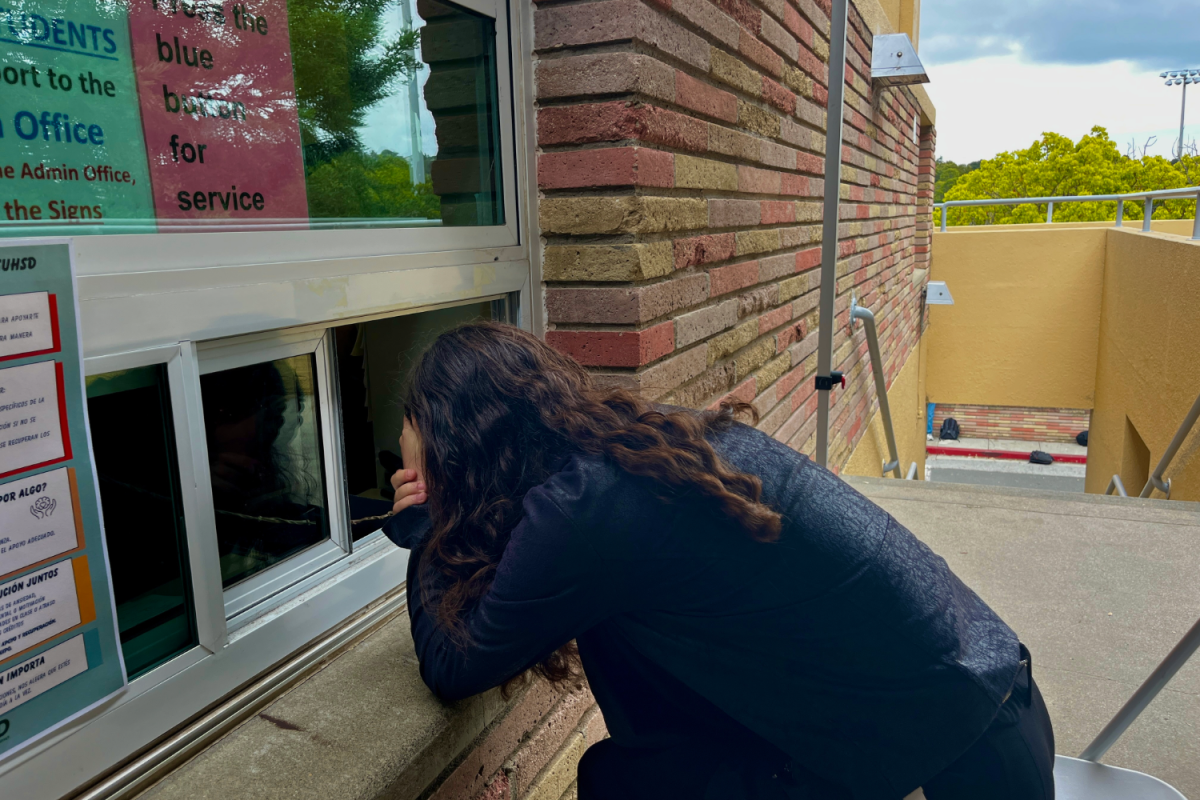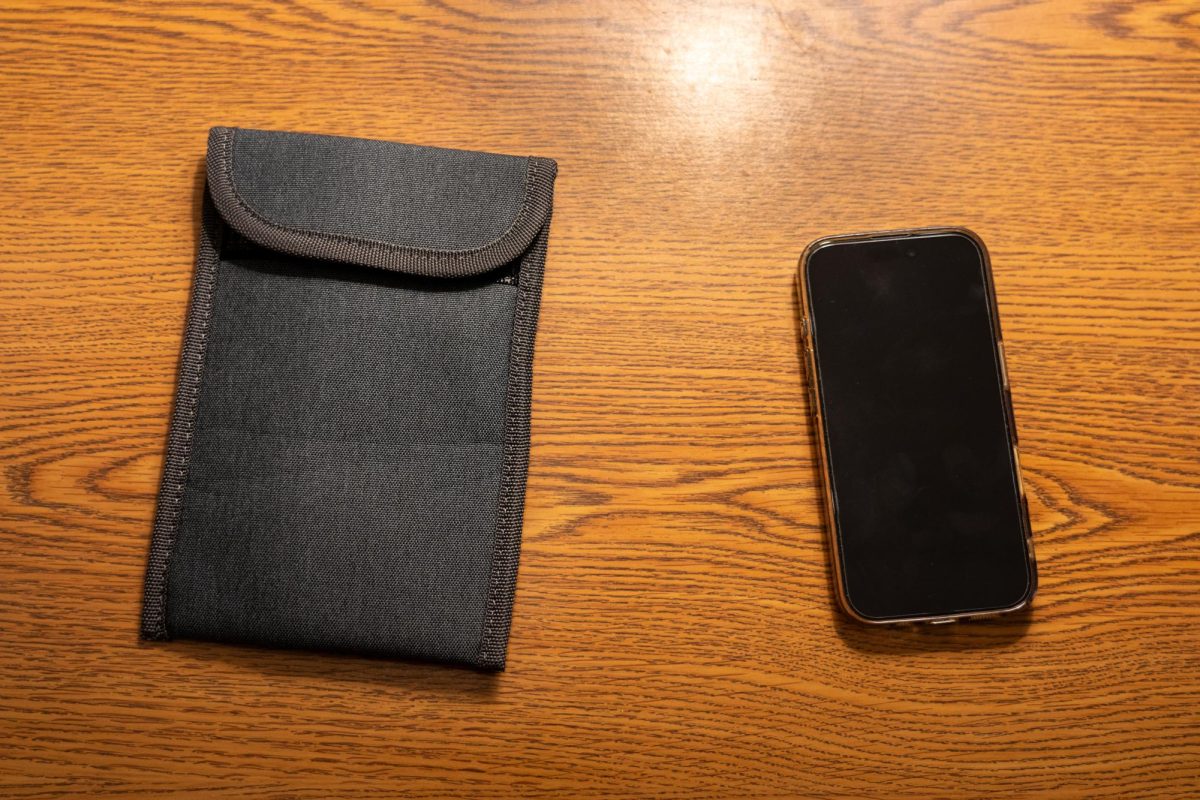This year Ames High has joined schools across the country who have implemented new cell phone bans. The decision comes as cell phones have been increasingly flagged as distractions. Last year a Pew Research survey found that 72% of high school teachers in the U.S. believed that cell phone usage was a major problem in their classroom. Concerns about the effects of cell phone use on student mental health have also encouraged bans. U.S. Surgeon General Vivek Murphy has warned that social media is a prominent factor in today’s youth mental health crisis.
“Our teachers were voicing concerns around student engagement in class based on their observations of students being on their cell phones…and so we heard from teachers that student engagement was really down because they were on their phones at different times,” said Kenneth Damron, an associate principal at Ames High School (AHS).
Ames High’s policy, which was instituted independently of the school board, is intended to address student engagement in the classroom rather than student mental health.
“I think we’re interested in having a conversation around cell phones and mental health with teenagers, but the policy itself is really directed at the engagement part of it in classrooms, because we’re still letting kids have their cell phones in between classes,” Damron said.
Praise for the Policy
Teachers have been appreciative of the new policy. “I love it,” Jessica Zeiss, an English teacher at Ames High School, said.
Zeiss has noticed that her students are more on task and social following the new policy. “I give them 20 to 25 minutes of just work time [and] there’s complete silence: Everyone’s writing. I don’t have to spend my energy and time telling kids to put phones away,” Zeiss said. “There’s more conversation, there’s more social interactions, and I feel like that’s going to eventually turn into happier students, a lot more positive energy at least.”
Students have, for the most part, complied with the policy. Zeiss, who believed she would have to force students to follow the policy, has been pleased with the response. “I was very pessimistic going into it because I thought that we’re going to be fighting the kids so much that it was never going to work. I am so pleasantly surprised,” she said.
Primarily, students’ compliance with the policy is due to a sense of peer pressure. “Since everyone else is not on their phones they’re more okay with missing out. Everyone else is doing it, so it’s no big deal,” Zeiss said.
Some students have also said they have felt more focused during class, and recognize that their screen time is an issue.
“I think it’s a really good policy, because everyone is focused and not too many are on their phone, although some kids are trying to sneak their phones in. But everyone’s staying focused. I think they’re getting good grades because the phones are gone,” freshman Jay Patel said.
Additionally, the policy doesn’t feel like much of a change from previous expectations at AHS.
“I think in years prior, there were teachers that had their own cell phone policy, and you had to put your phone in the caddy before going in the classroom,” said senior Bailey Stewart. “This just doesn’t feel that different.”
Stewart also felt that students in her past classes hadn’t had major issues with phone usage, but does believe they had an impact on productivity.
“The students in my classes really care about their education,” Stewart said. “I don’t think phones were prominent during discussion time. I think it was more of an issue during independent work time.”
Student Concerns
Despite its positive effects, the policy has had drawbacks. Some students with 504 plans have been unable to have their accommodations met because of the new policy. Angel, a sophomore at AHS, who has asked to be identified only by their first name, has accommodations which allow them to listen to music on their phone during tests. The new policy has made it so that they have not been allowed to stream music during some tests. They are not allowed to stream music on their Chromebook because of concerns around academic dishonesty.
“There’s a whole list of people who are wanting to get phones just for music, because it’s really inconvenient to have your chromebook out to play music, especially if you’re doing a test. Now [we] have to jump through so many hoops to even see if [we] can do that,” they said.
Angel met with their counselor to discuss if they could continue to play music on their phone despite the new regulations, but their request was ultimately denied. Although many of their teachers have been understanding, it has been challenging for them to adapt in the meantime. Angel says many other students with 504 plans involving cell phone use have faced similar issues. Angel, however, is still supportive of the policy- as long as it provides exceptions.
“I agree with the policy and everything around it. They just need to make it more flexible for students with 504s and accommodations,” they said.
Kenneth Damron encourages students in these situations to speak with an administrator. “I think that’s where the flexibility [part of] the policy has to come in. We have to [ask ourselves] how do we address that need that not only satisfies the policy, but meets the accommodations for students,” Damron said.
Other students fear not having their cell phone near them in an event of gun violence at the school.
“Banning phones but not being stricter on weapons is not the right angle. In case something happens, I [want to] be able to contact my parents,” sophomore Jaye Grimm said.
Damron, however, says that students would still have general access to their cell phones because they are stored in their bags or in cell phone caddies. “In the case of an emergency, the likelihood is that you would still be able to get access to your phone,” Damron said.
Flexible Implementation
While the policy is required by the Ames High School administration, it is not enforced by some teachers. Freshman Alex Okerlund says that in 25% of his classes phones are still allowed, although these classes are primarily study halls. A vast majority of students also do not use the provided phone caddies. Recent internet issues at the high school have also hindered the enforcement of the policy. Many students have needed to use their phones during class in order to connect their computer to a hotspot so that they can complete schoolwork.
However, the policy is largely still effective.
“It depends on the class period, maybe [phones] are not in the caddy, but most people don’t have their phones out at all. They’re usually in their bag. They’re in their pocket,” Okerlund said.
Damron understands that universal implementation does not exactly look the same.
“Are kids keeping their cell phones in their backpacks? Yeah. We’re not going to rip open a kid’s backpack and search it. And so implementation has looked a little different in different classrooms, but for the most part, I think it’s been effective.”
Damron wants students to remember that no part of the policy is set in stone. The policy is open to debate, and he encourages students to include their voice in the ongoing conversation.
“I don’t see a need to go to a more restrictive policy,” Damron said. “If we’re still seeing issues, or if there’s a push for that, then we want to include student voices to make sure that all parties involved are getting a say.”
This story was originally published on The WEB on October 10, 2024.


































